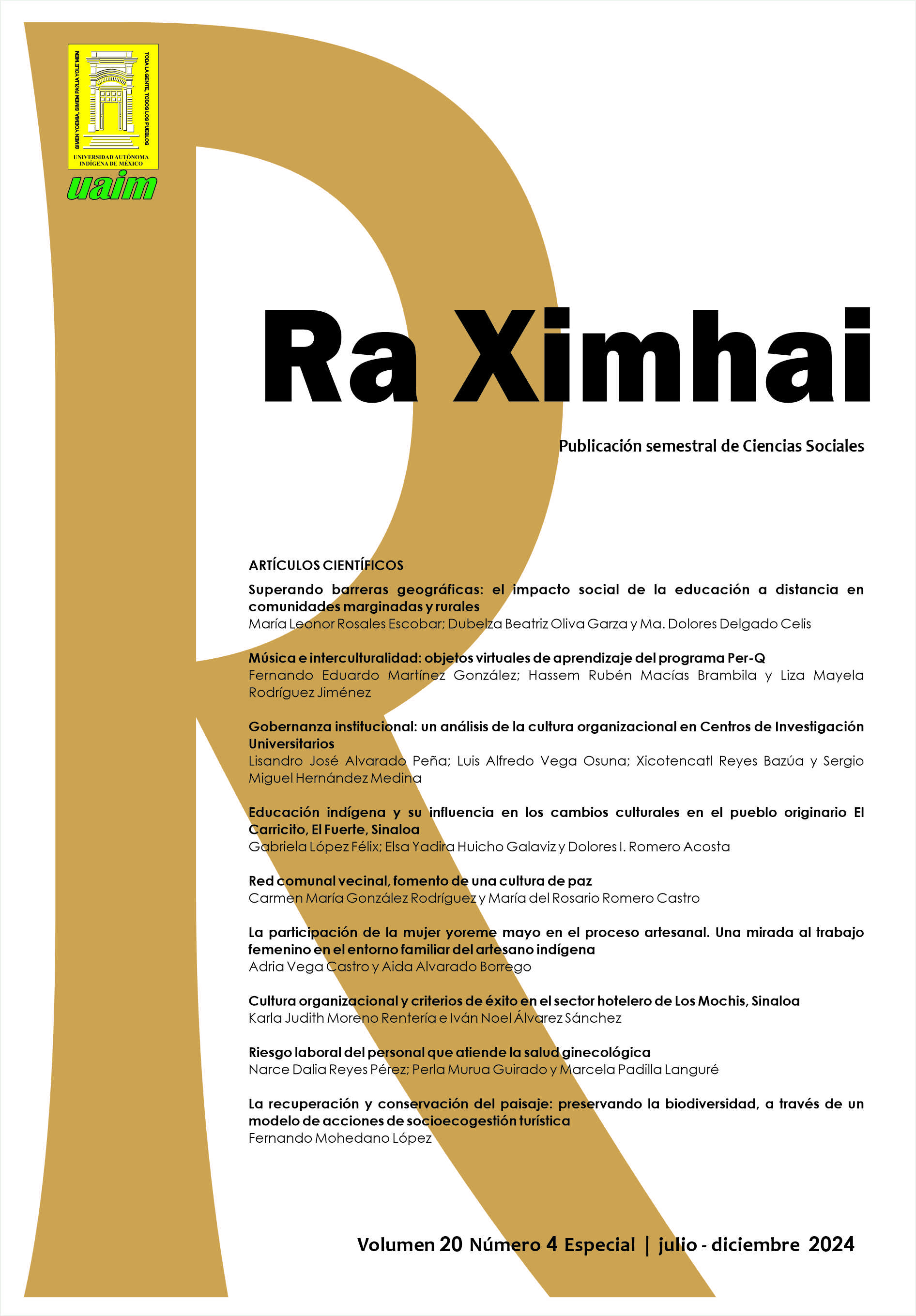Music and interculturalism: virtual objects of learning from the Per-Q program
DOI:
https://doi.org/10.35197/rx.20.04.2024.02.fmKeywords:
musical education, intercultural competence, digital resourcesAbstract
The present work analyzes the impact that Virtual Learning Objects (VLO) has had on young teenagers, carried out as part of the Per-Q program of rhythmic musical learning, as tools for the development of intercultural competence. Per-Q: Program of musical education for virtual learning environments, was a project created as part of the postgraduate studies in the Master degree on Learning Management in Virtual Environments from the Virtual College System of the University of Guadalajara, present in its first implementation as an online course of rhythmic learning. Per-Q promotes interculturalism as part of its main competences, where music is presented as an element that encourages diversity and the acknowledgement of cultural identity. The project set out to create original digital resources that provide information regarding rhythm and percussive instruments belonging to the prehispanic cultures of Mexico. Through a mixed descriptive research, it was possible to know the perception and opinions of teenagers between 12 and 18 years of age regarding two of the resources belonging to the program. The resources, which are considered VLOs due to their characteristics, seek to acquaint the new generations with their roots and cultural traditions through music, as well as to promote intercultural competence amongst young Mexicans.
Downloads
References
Cámara de Diputados del H. Congreso de la Unión. (2024). Ley General de Educación. Últimas reformas publicadas DOF 07-06-2024. Gobierno de México. México. https://www.diputados.gob.mx/LeyesBiblio/pdf/LGE.pdf
Dworsky, A. (2002). Slap Happy: How to Play World-Beat Rhythms with Just Your Body and a Buddy. Dancing Hands Music. Minnetonka, MN. Estados Unidos.
Feria-Marrugo, I. M. (2016). Objetos virtuales de aprendizaje y el desarrollo de aprendizaje autónomo en el área de inglés. Praxis, 12, 63
Hemsy de Gainza, V. (2004). La educación musical en el siglo XX. Revista musical chilena, 58(201), 74-81. https://www.scielo.cl/scielo.php?pid=S0716-27902004020100004&script=sci_arttext
Hernández, M.V. (2024). Retos de las maestras y los maestros en la educación intercultural e inclusiva de la Nueva Escuela Mexicana. Secretaría de Educación Pública. México. https://educacionbasica.sep.gob.mx/wp-content/uploads/2024/05/educacion-intercultural.pdf
Instituto Nacional de Estadística y Geografía, INEGI. (2023). Encuesta Nacional sobre Disponibilidad y Uso de Tecnologías de la Información en los Hogares (ENDUTIH), 2023. https://www.inegi.org.mx/programas/endutih/2023/
Latapie, I. (2007). Acercamiento al aprendizaje multimedia. Investigación universitaria multidisciplinaria: Revista de investigación de la Universidad Simón Bolívar, (6), 7. http://www.cienciashumanasusb.mx/wp-content/uploads/2018/07/acercamiento_al_aprendizaje_multimedia_m.pdf
Mayer, R. (2009). Multimedia Learning. Second Edition. Cambridge University Press.
Olcina-Sempere, G., Reis-Jorge, J., & Ferreira, M. (2020). La Educación intercultural: la música como instrumento de cohesión social. Revista de Educación Inclusiva, 13(1), 288-311.
Per-Q. (14 de mayo de 2023). El ritmo en el México prehispánico - Mtro. Ernesto Cano. YouTube. https://www.youtube.com/watch?v=Zpd7CyxMGCk&t=1s
Pérez- Aldeguer, S. (2014). Programa Dum-Dum. 12 Sesiones para mejorar la competencia intercultural mediante la percusión. Laertes. Barcelona, España.
Salas, A. L. C. (2001). Implicaciones educativas de la teoría sociocultural de Vigotsky. Revista educación, 25(2), 59-65. https://www.redalyc.org/pdf/440/44025206.pdf
Sánchez Medina, I.I. (2014). Estado del arte de las metodologías y modelos de los Objetos Virtuales de Aprendizaje (OVAS) en Colombia. Entornos, (28), 93-107. doi:/10.25054/01247905.528
Secretaría de Educación Pública (2017). ¿Sabes en qué consiste la Educación Intercultural? Gobierno de México. https://www.gob.mx/sep/articulos/sabes-en-que-consiste-la-educacion-intercultural
Subsecretaría Educación Media Superior. (2019). La Nueva Escuela Mexicana: principios y orientaciones pedagógicas. Secretaría de Educación Pública. México. https://dfa.edomex.gob.mx/sites/dfa.edomex.gob.mx/files/files/NEM%20principios%20y%20orientacio%C3%ADn%20pedago%C3%ADgica.pdf
Downloads
Published
How to Cite
Issue
Section
License

This work is licensed under a Creative Commons Attribution-NonCommercial 4.0 International License.
Usted es libre de:
- Compartir — copiar y redistribuir el material en cualquier medio o formato
- Adaptar — remezclar, transformar y construir a partir del material
- La licenciante no puede revocar estas libertades en tanto usted siga los términos de la licencia
Bajo los siguientes términos:
- Atribución — Usted debe dar crédito de manera adecuada , brindar un enlace a la licencia, e indicar si se han realizado cambios . Puede hacerlo en cualquier forma razonable, pero no de forma tal que sugiera que usted o su uso tienen el apoyo de la licenciante.
- NoComercial — Usted no puede hacer uso del material con propósitos comerciales .
- No hay restricciones adicionales — No puede aplicar términos legales ni medidas tecnológicas que restrinjan legalmente a otras a hacer cualquier uso permitido por la licencia.








